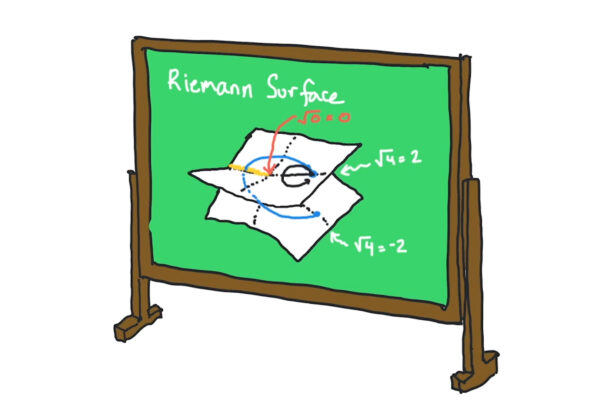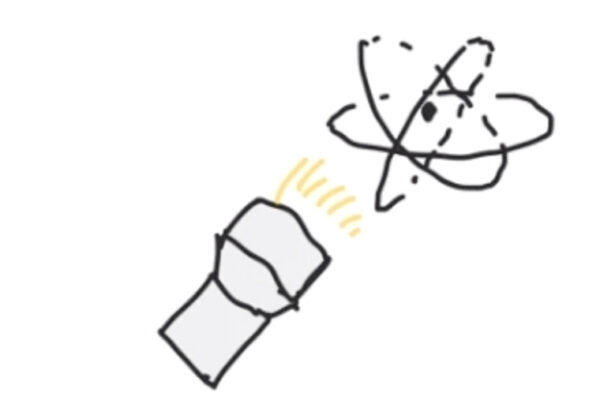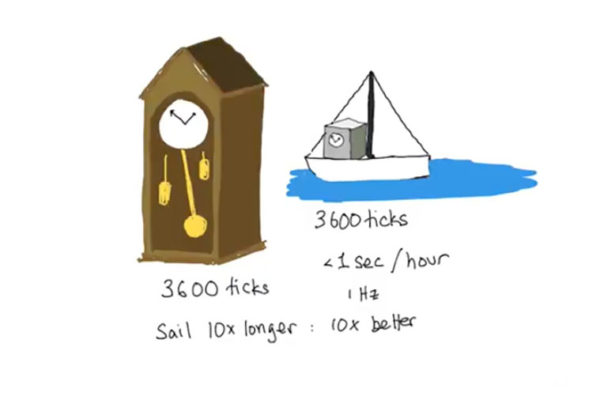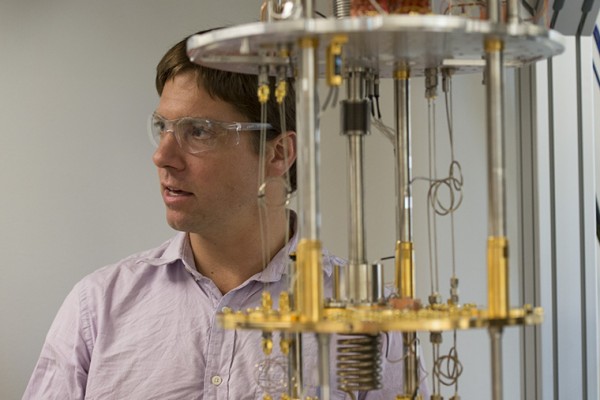Murch’s research focuses on the interface of Atomic, Molecular, and Optical (AMO) and condensed matter physics. Using nano-fabrication techniques to construct superconducting quantum circuits allows his group to probe fundamental questions in quantum mechanics.
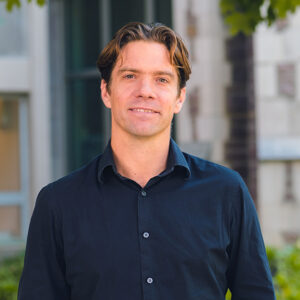
Kater Murch
Associate Professor of Physics
Contact Information
- Phone: 314-935-7765
- Email: KMurch@wustl.edu
- Website: Website
Media Contact
In the media
New Views of Quantum Jumps Challenge Core Tenets of Physics
Kater Murch, associate professor of physics
A Newly Seen Quantum Symmetry Can Lead To Insights To The Workings Of The Universe
Kater Murch, associate professor of physics
Stories
Complex energies, quantum symmetries
New research from Washington University in St. Louis realizes one of the first parity time-symmetric quantum systems, allowing scientists to observe how that symmetry — and the breaking of it — leads to previously unexplored phenomena. These and future PT symmetry experiments have potential applications to quantum computing. The work from the laboratory of Kater Murch, associate professor of physics in Arts & Sciences, is published Oct. 7 in the journal Nature Physics.
Characterizing the ‘arrow of time’ in open quantum systems
Even in the strange world of open quantum systems, the arrow of time points steadily forward — most of the time. A video details new experiments conducted at Washington University in St. Louis that compare the forward and reverse trajectories of superconducting circuits called qubits, and find that they largely tend to follow the second law of thermodynamics. The research is published July 9 in the journal Physical Review Letters.
A bit of a ‘quantum magic trick’
Is there a faster way to determine a frequency? It turns out there is, in a new discovery published this week in Physical Review Letters by a collaboration between a Washington University in St. Louis and the University of Rochester.
Shaking Schrödinger’s cat
Frequent measurement of a quantum system’s state can either speed or delay its collapse, effects called the quantum Zeno and quantum anti-Zeno effect. But so too can “quasimeasurements” that only poke the system and garner no information about its state.
Murch wins Sloan Research Fellowship
The Alfred P. Sloan Foundation announced Feb. 23 that Kater Murch, PhD, assistant professor of physics in Arts & Sciences at Washington University in St. Louis, has been awarded a 2015 Sloan Research Fellowship. He is among 126 outstanding U.S. and Canadian researchers selected as fellowship recipients this year. The fellowships are given to early-career scientists and scholars whose achievements and potential identify them as rising stars, the next generation of scientific leaders.
Finding quantum lines of desire
What paths do quantum particles, such as atoms or photons, follow through quantum state space? Kater Murch of Washington University in St. Louis has used a superconducting quantum device to continuously and repeatedly record the paths the device took through quantum state space. From the cobweb of a million paths, a most likely path between two quantum states emerged, much as social trails emerge as people round off corners or cut across lawns between buildings. The research is featured on the cover of the July 31 issue of Nature.
